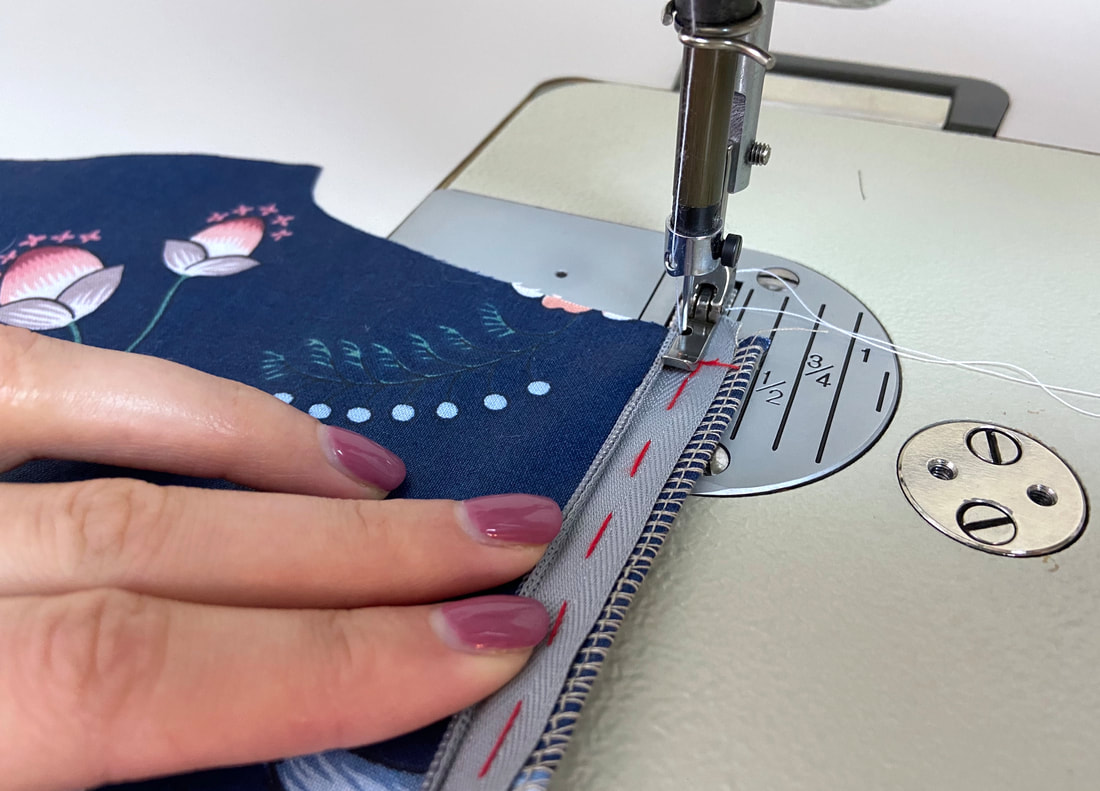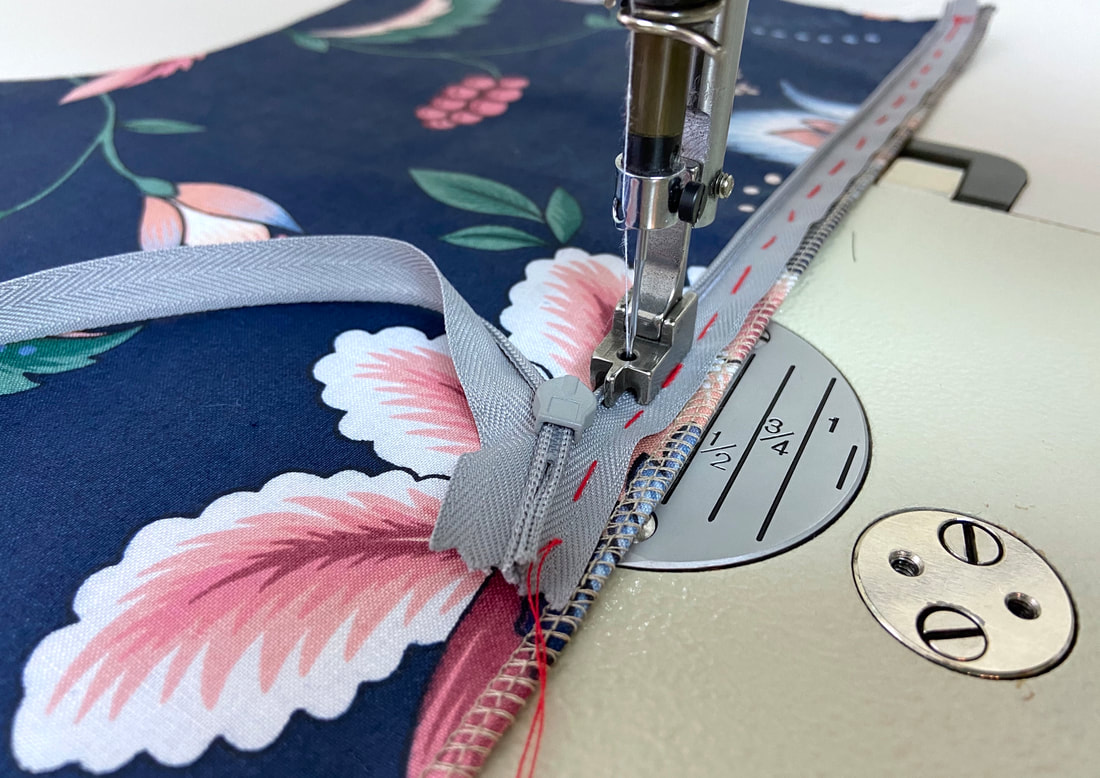Two Different Ways To Stitch Invisible Zippers
Using a regular zipper foot: A conventional zipper foot is a standard presser foot included with your sewing machine kit. This narrow presser foot aligns the machine needle to either the right or left of the foot plate.
A zipper foot is used to stitch next to zipper coils, decorative elements, raised edges and other obstacles you'll find yourself navigating in the dressmaking process. The location of the needle in relation to the plate is chosen based on the direction in which you are sewing, as well as the raised edges you are stitching against.
When sewing an invisible zipper, the needle should be aligned such that it stitches in the crease created by the folded zipper teeth. When using a regular zipper foot, you will have to unfold the zipper tape and hold the coils up with your hand as you stitch. Doing so will help the foot plate align the needle against the coils, guiding it smoothly along the zipper tape crease.
When using a regular zipper foot, it helps to hand baste the zipper tape to the garment's seam edge as this will prevent the zipper from shifting out of alignment in the stitching process.
A zipper foot is used to stitch next to zipper coils, decorative elements, raised edges and other obstacles you'll find yourself navigating in the dressmaking process. The location of the needle in relation to the plate is chosen based on the direction in which you are sewing, as well as the raised edges you are stitching against.
When sewing an invisible zipper, the needle should be aligned such that it stitches in the crease created by the folded zipper teeth. When using a regular zipper foot, you will have to unfold the zipper tape and hold the coils up with your hand as you stitch. Doing so will help the foot plate align the needle against the coils, guiding it smoothly along the zipper tape crease.
When using a regular zipper foot, it helps to hand baste the zipper tape to the garment's seam edge as this will prevent the zipper from shifting out of alignment in the stitching process.
Using a specialized invisible zipper foot: This is the easiest way to stitch an invisible zipper application. While an invisible zipper foot will most likely not be provided with your machine kit, you can purchase one individually based on your sewing machine model. This unique zipper foot features one or two slots (usually two) that keeps the coils continuously pointed upwards as the stitch is applied right next to the zipper teeth (in the crease created by the folded tape).
Note: You might have some difficulty inserting the beginning of the zipper coils into the presser foot slot, but once aligned, the narrow slots are able to keep the zipper teeth perfectly in place thus minimizing the risk of stitching unevenly.
Note: You might have some difficulty inserting the beginning of the zipper coils into the presser foot slot, but once aligned, the narrow slots are able to keep the zipper teeth perfectly in place thus minimizing the risk of stitching unevenly.



